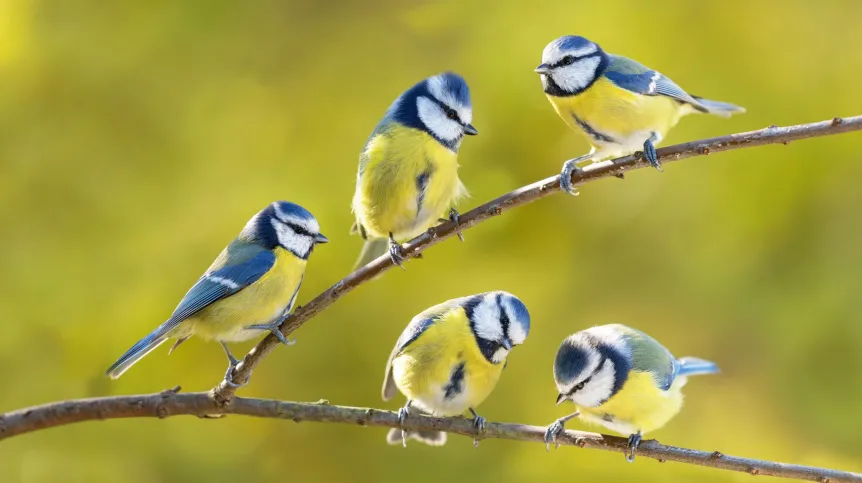
The impact of a polluted environment on the colour of a birds’ feathers and bodies varies depending on the type of colour. Scientists are trying to determine how serious this impact is, but they still lack some data, for example, on what the importance of the presence of pharmaceuticals in the environment is.
The results of the meta-analysis conducted by Polish scientists were published in Biological reviews. Katarzyna Janas, Agnieszka Gudowska and Szymon Drobniak analysed 59 papers published between 1997 and 2022, describing research on the colouration of 25 bird species. The scientists wanted to check whether decorative plumage (ornament), which owed its colours to various colour production mechanisms, differed in sensitivity to anthropogenic factors.
'We wanted to find out whether there was an interaction between the mechanism of colour production and the type of anthropogenic factor,’ write the authors of the meta-analysis.
Researchers distinguished four categories of anthropogenic factors: heavy metals, persistent organic pollutants (POPs), urbanisation, and others (including radioactive contamination and petroleum pollution). They also determined the type of mechanism responsible for the colour of each analysed ornament.
Colour in birds is produced from pigments present in feathers, unfeathered parts of the body (e.g. the beak, skin), and thanks to the interaction of light with regular nanostructures inside the feathers (this is called structural colouration).
The most common pigments include eumelanin, responsible for black and shades of grey, and pheomelanin, creating colours ranging from warm browns to reds and light fawn. A huge number of species also have colouration based on carotenoid pigments, which produce colours ranging from yellow and olive to orange and red. Birds cannot produce these pigments on their own and must obtain them with food, which is why the quality of this colouration may depend on the availability of specific food in the environment. Structural colouration is responsible for iridescent and metallic colours and a whole range of blues with a strong admixture of ultraviolet, invisible to humans but visible to birds.
'In our meta-analysis, we divided the types of colouration into three categories: carotenoid-based, melanin-based and structural,’ the researchers write.
They managed to find significant differences in the sensitivity of ornaments depending on the colour production mechanism. Carotenoid-based coloration is more sensitive than melanin-based or structural coloration.
'One of the reasons for this state of affairs may be the need to obtain carotenoids in food - their sources include fruits and invertebrates. In degraded or polluted areas, the availability of this pigment may be reduced,’ the researchers say.
Contrary to expectations, they failed to detect a link between the colour production mechanism and the type of pollution. However, they did observe a tendency towards greater sensitivity to pollution in males, but - as they say - this relationship was not statistically significant, possibly due to the large number of studies in which data on gender were not taken into account.
'Although we have managed to demonstrate the sensitivity of carotenoid-coloured ornaments, their use in environmental bioindication seems to be quite remote for now. On the one hand, this requires a better understanding of the natural variability that occurs in these traits, including differences between carotenoids in feathers after previous metabolic modification (e.g. into red keto-carotenoids) and those deposited directly, without prior conversion (e.g. lutein and zeaxanthin in the great tit). On the other hand, it is necessary to unify methods for objectively measuring colour quality,’ the scientists write
They were also able to pinpoint areas where data was lacking to draw clear conclusions. One of them is the influence of pharmaceuticals on hormonal changes and, consequently, the colouring of birds.
'The data we collected also highlighted gaps in our knowledge. Compared to the number of studies on pigment-based ornaments, relatively few papers have been devoted to both types of structural coloration. Moreover, there are no publications that would investigate the impact of pharmaceuticals, especially those that disrupt the functioning of the endocrine system,’ the scientists say.
According to the authors of the paper, relatively little research has been devoted to females. Their colouration, although usually less bright than that of males, in many species plays an important role in sexual selection or competition between individuals of the same sex. In most cases, the impact of pollution on birds' colour changes cannot be seen with the naked eye. It is very subtle or invisible to the human eye.
'It is easiest to notice such changes in the carotenoid colouring of great tits and blue tits found in the centres of large cities. There are individuals there with particularly faded colours. Remember that the colour of the feathers indicates the condition of the bird and the quality of the environment in which it lived while moulting, and therefore not necessarily in the place and time where we observe it. However, it is always worth paying attention to unusually coloured individuals and documenting them - they may constitute important red flags,’ the scientists warn. (PAP)
PAP - Science in Poland, Urszula Kaczorowska
uka/ bar/ kap/
tr. RL













